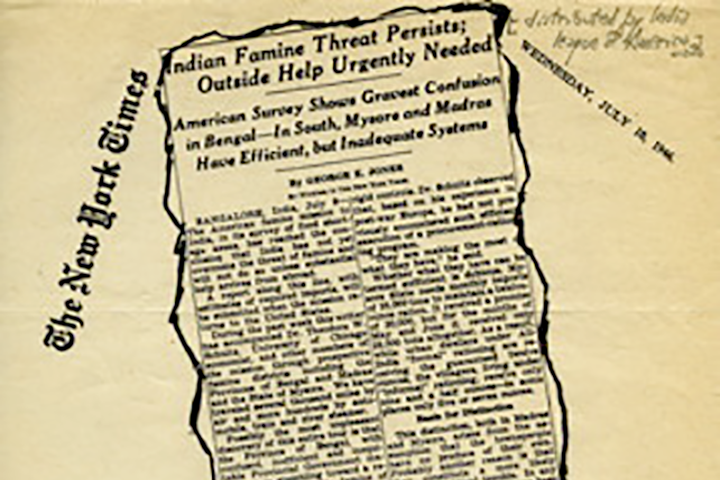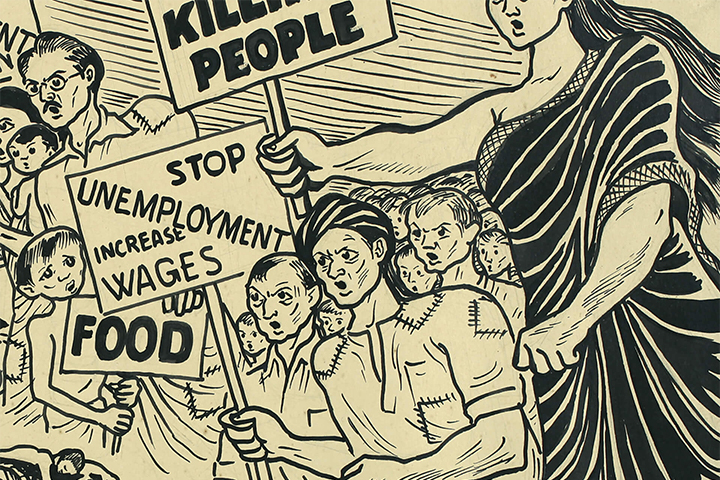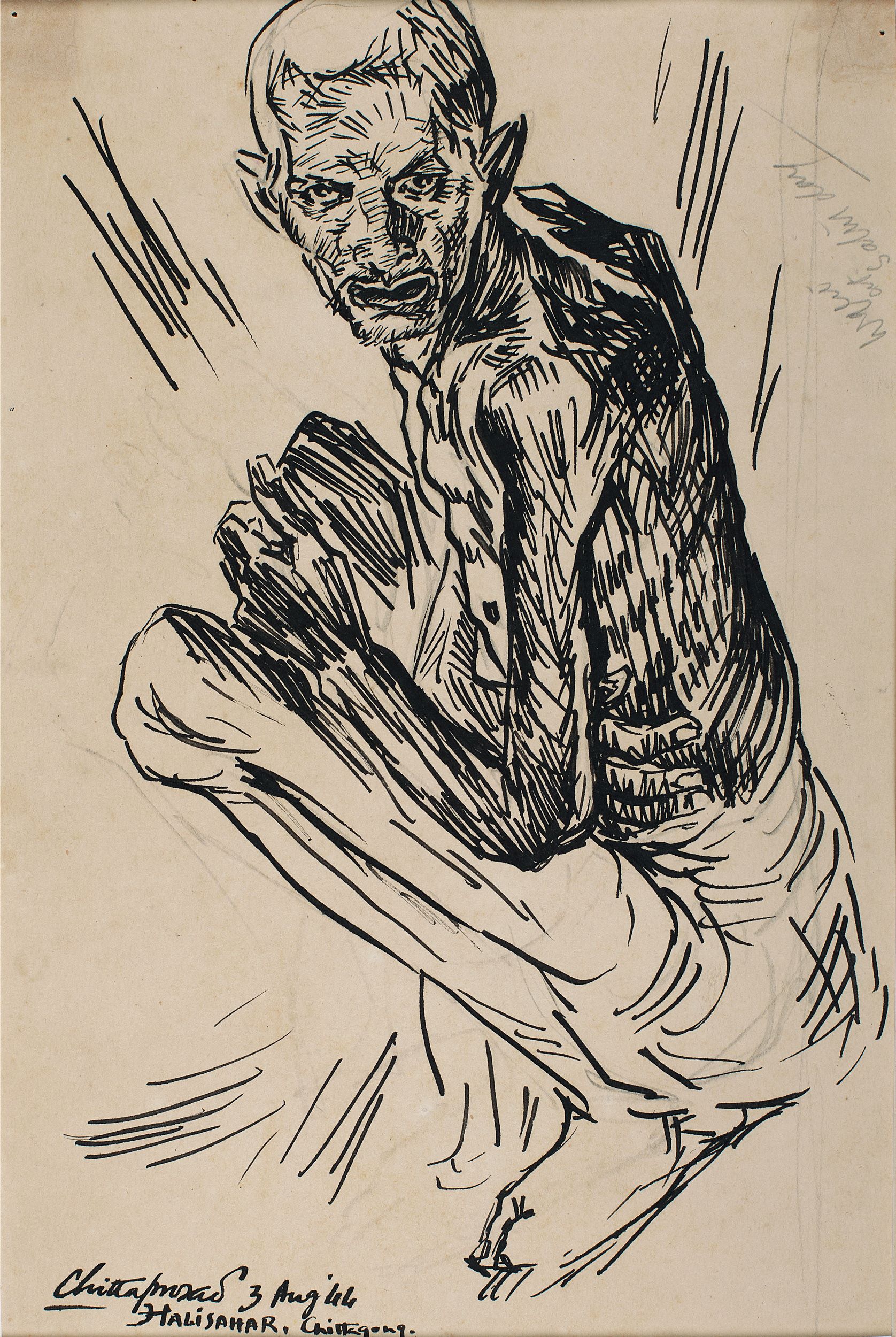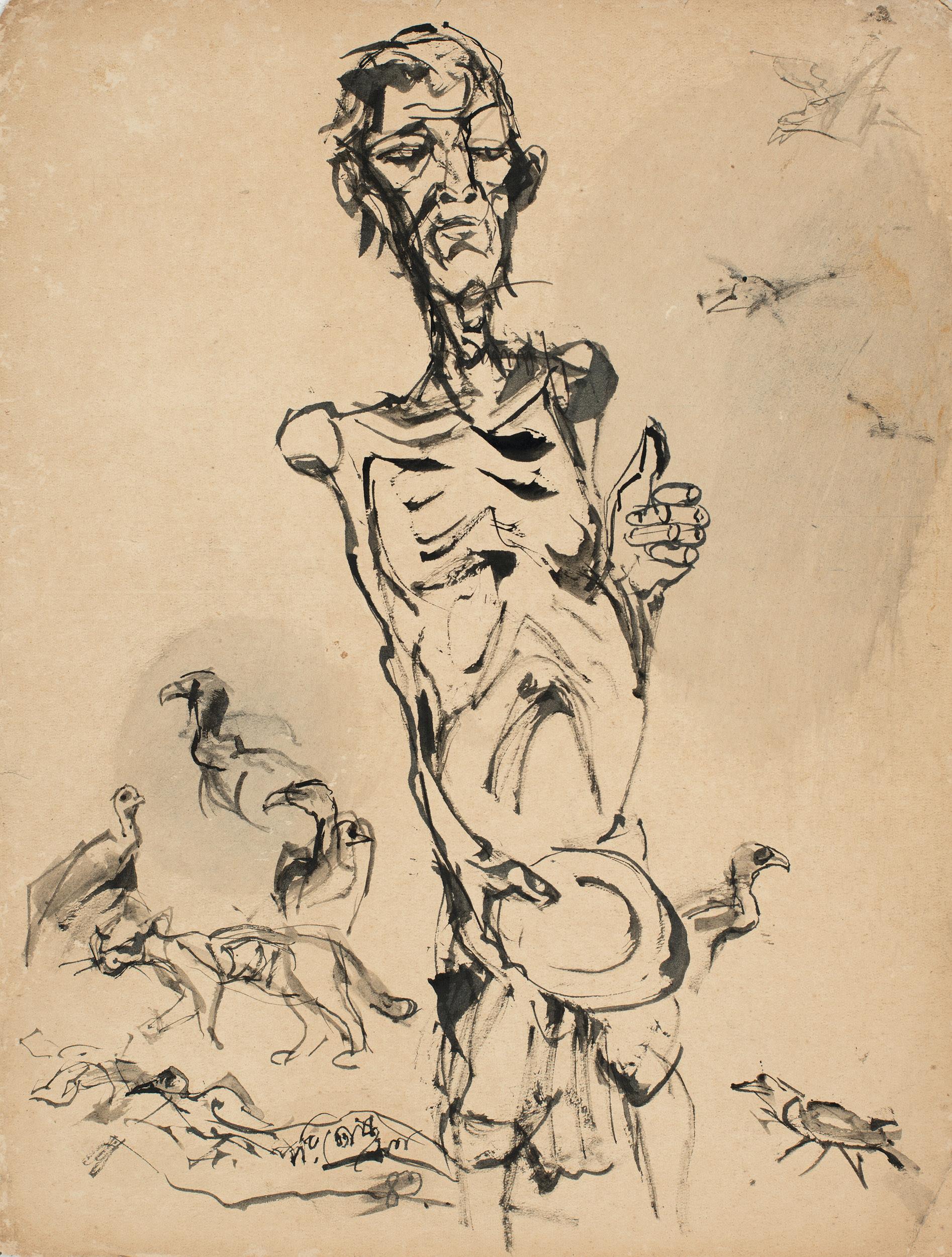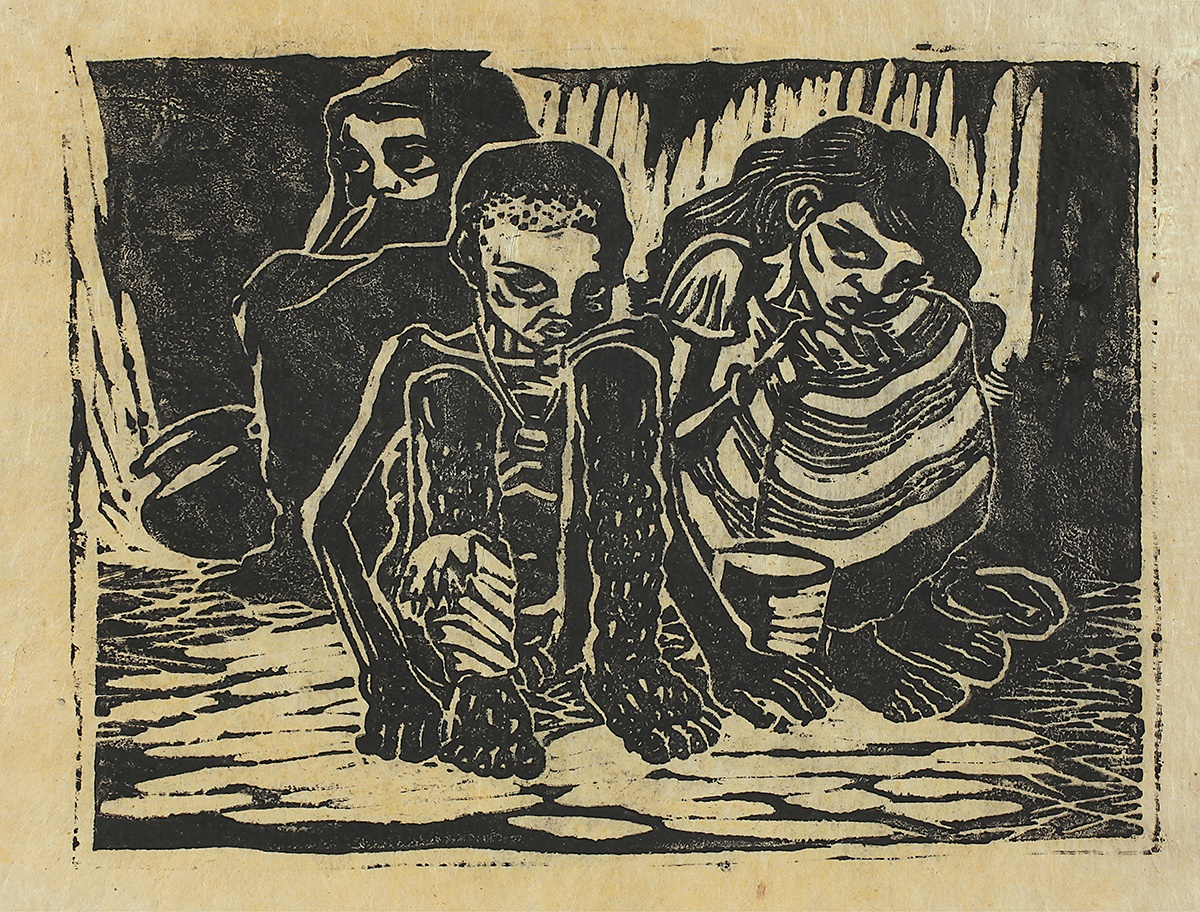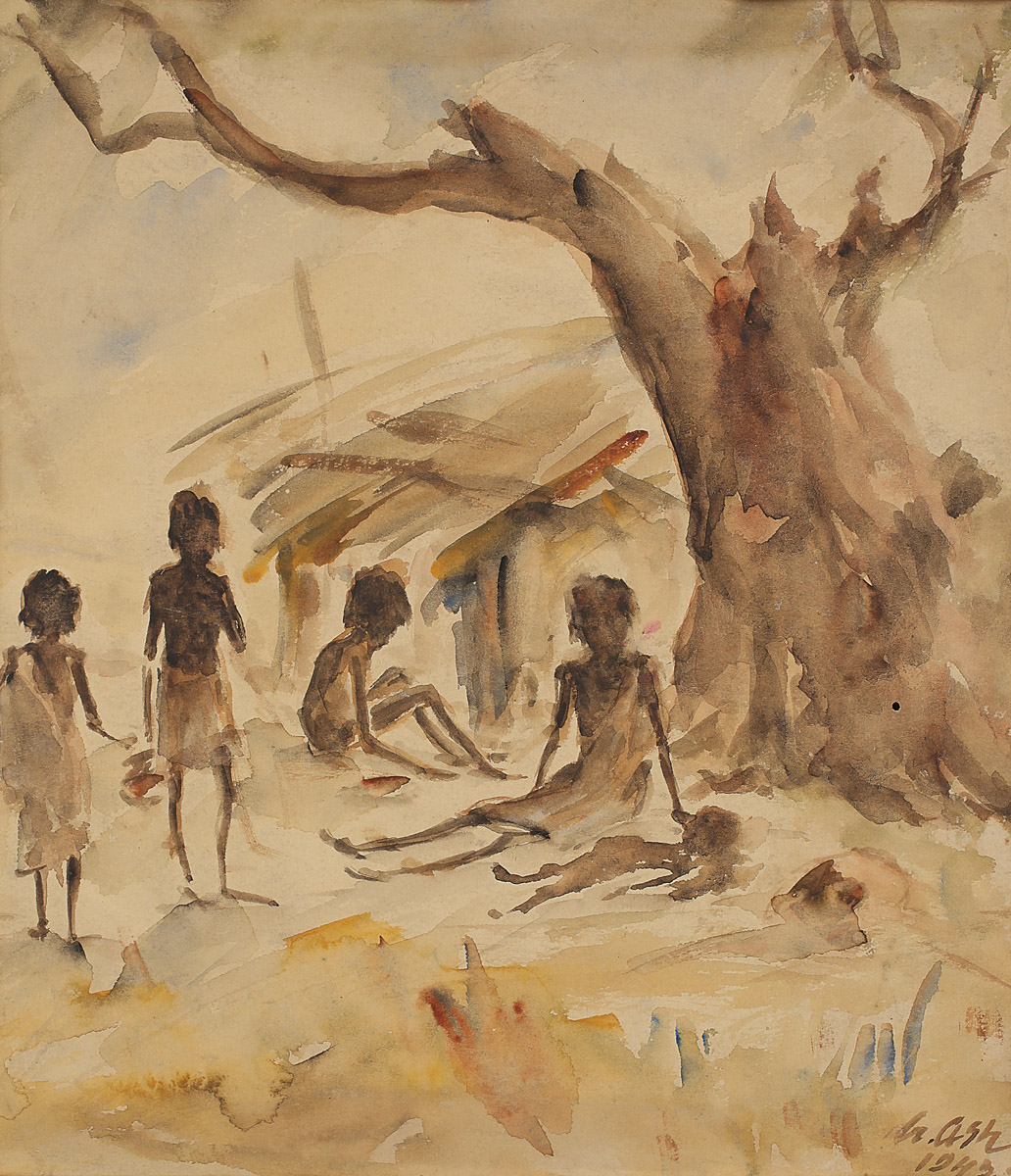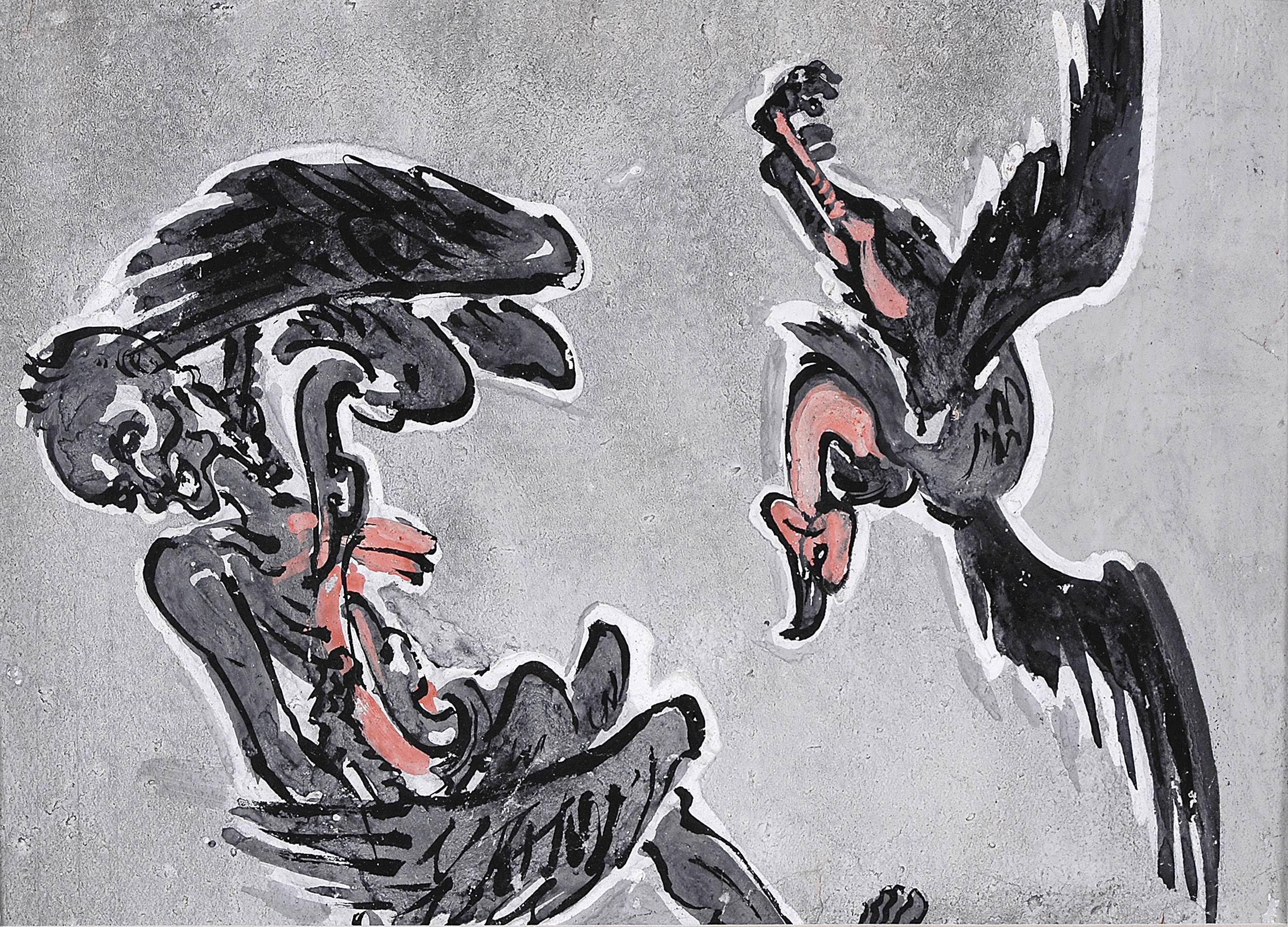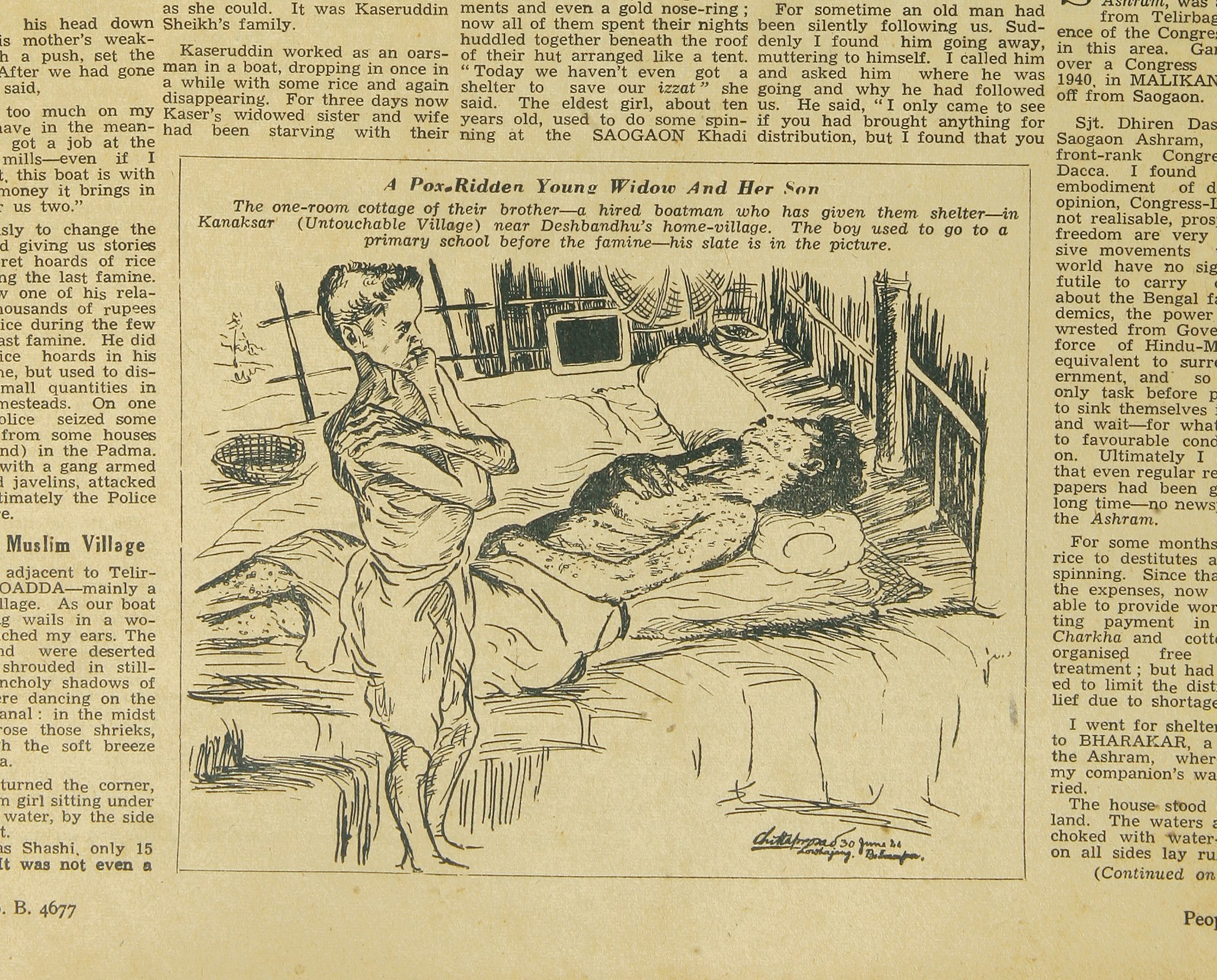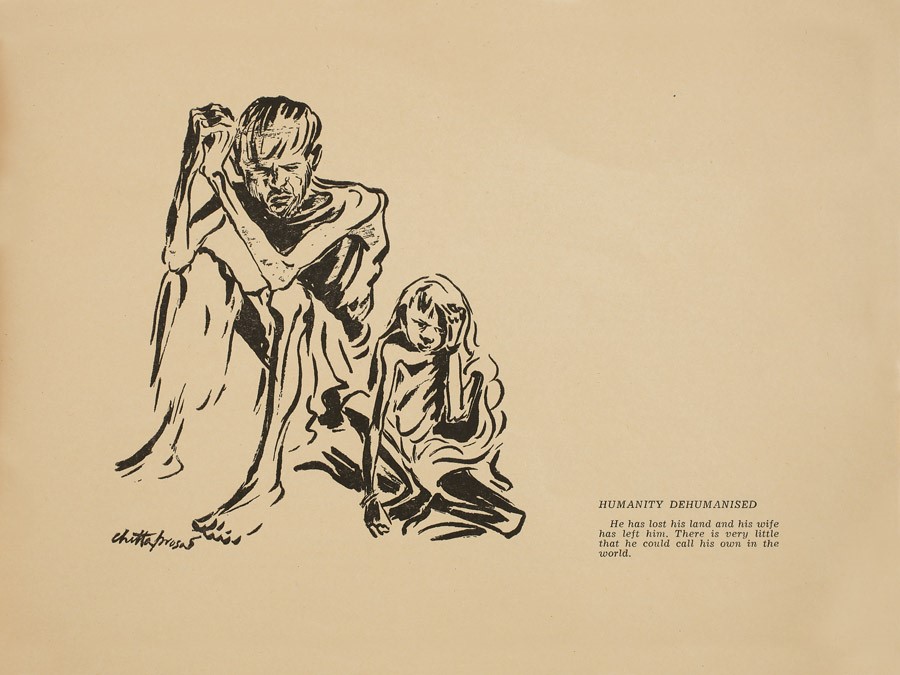Famine
The Bengal famine of 1943 is a complex and contentious period in our colonial history. Taught in Indian schools as part of the history curriculum, this event has been studied extensively through various historical and political lenses. This resource pack is curated with the aim to equip educators with primary sources such as artworks and newspapers as well as secondary sources like essays that can engage students as active learners in the classroom.
Chittaprosad
Halisahar, Chittagong 1944
Ink on paper
Paritosh Sen
Untitled
Ink on paper
Chittaprosad
Untitled
Linocut on paper
Zainul Abedin
Untitled 1942
Woodcut on newsprint paper
Chittaprosad
Purna Sashi 1944
Ink on paper
Gobardhan Ash
One by One 1943
Water colour on paper
Ramkinkar Baij
Untitled 1943
Water colour and ink on paper
Chittaprosad
A Pox Ridden Young Widow and Her Son 1944
Newspaper print
Chittaprosad
Humanity dehumanised, from Hungry Bengal 1943
An excerpt from Chittaprosad’s Hungry Bengal
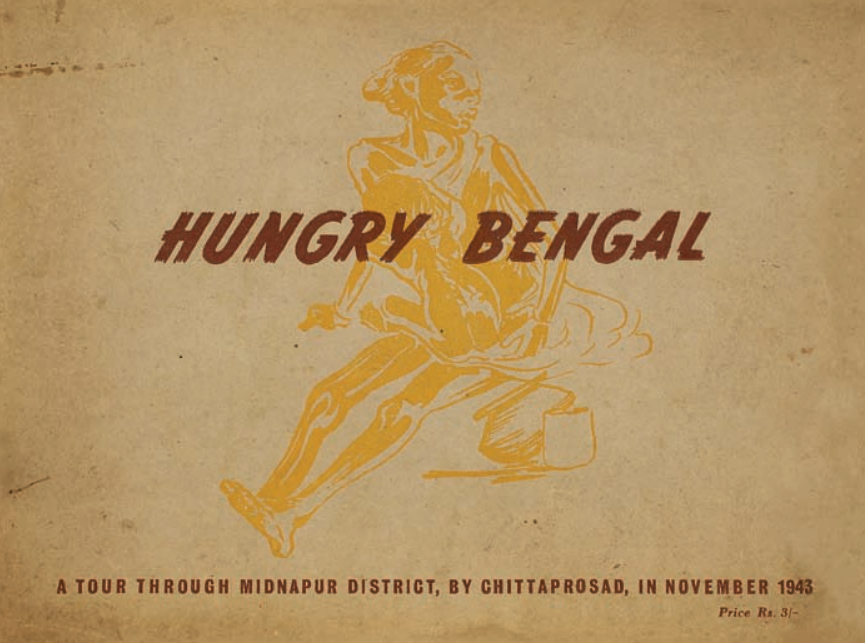
Artist Chittaprosad, an active member of the Communist Party of India (CPI), travelled across Bengal during the famine and documented through sketches and journal entries his eyewitness accounts of the conditions in the streets of Kolkata as well as Contai, Bikrampur, and other regions of the former Midnapore district.
Many of his writings and sketches were published in prominent communist publications of the time. A set of twenty sketches, along with some of his journal entries were published as a volume titled ‘Hungry Bengal’, which was met with suppression by the British authorities, resulting in only one copy of the book surviving. Hungry Bengal was republished by DAG, and here an excerpt from it has been reproduced.
Famine In Bengal
British Pathé
Watch a video made as an appeal for help during the famine from the archives of the British Pathe. Notice the archival notes to find insights about the way these videos were often catalogued, for example the language is noted as “possibly Hindustani”.
What language do you think the voice over is actually in?
Sunil Jana Photographs
PIX
Sunil Janah, like Chittaprosad, was also a member of the Communist Party of India (CPI), and an artist who travelled across Bengal capturing scenes of the famine on his camera.
Discover his photographs published in People’s War newspaper and read about his work in this article.
Indian Famine Threat Persists; Outside Help Urgently Needed
The New York Times
How were Indians outside India, or members of the diasporic community, reacting to the famine? This 1946 New York Times article gives us a glimpse at the diasporic Indian community’s response
Chittaprosad
Gallery Exhibition
Chittaprosad’s works have been instrumental in creating the visual consciousness we have of the Famine today.
Explore more through DAG’s landmark exhibition about this extraordinary artist and activist.





